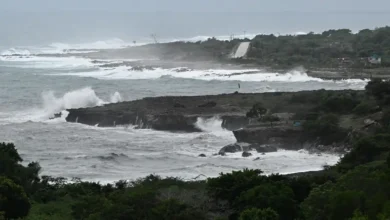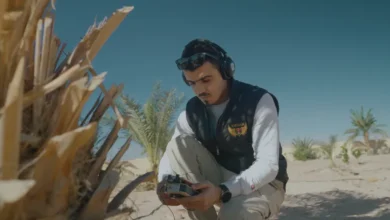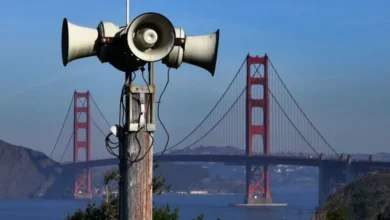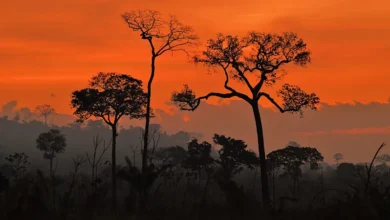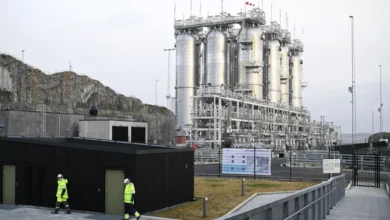Lassen Volcanic National Park: California’s spectacular alternative to Yosemite
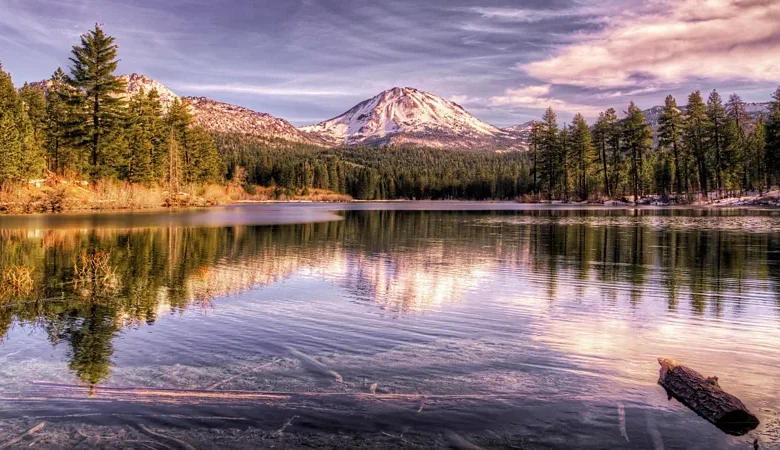
Yosemite may get all the attention, but a road trip to Lassen’s otherworldly landscape offers a hit of jaw-dropping natural beauty – without the crowds.
If Yosemite is the Disneyworld of California’s national parks, Lassen Volcanic National Park is the county fair. But despite hosting just 11% of Yosemite’s annual visitors to its otherworldly landscape, Lassen is no less awe-inspiring, yet its remote location and shorter season all help keep the crowds away.
“People don’t quite know what’s here other than a large volcano,” said Lassen park ranger Shanda Ochs, referring to Lassen Peak, the world’s largest plug dome volcano that famously spewed ash 200 miles across California in 1915 and brought the area to the world’s attention. But once visitors leave, Ochs says they tell her how surprised they were by Lassen’s brilliant blue alpine lakes, dense conifer forests, wildflower meadows and surreal geothermal features such as steaming fumaroles and boiling mudpots heated by magma three miles underground.
Today, Lassen remains an active volcano, but scientists say it’s highly unlikely that it or neighbouring Mount Shasta will erupt in the next 30 years. Instead, its spewing volcanic gasses and belching pools evoke an eerily beautiful Martian-esque world, and a reminder that California remains a rumbling, bubbling volcanic land in the making. As my family and I discovered, Lassen also makes for a spectacular summer road trip – especially when you combine it with a few other natural wonders nearby.

My husband and our two boys started our trip by driving 160 miles north of Sacramento to Redding, the closest major city to Lassen, located roughly an hour’s drive from the park entrance and home to the iconic Sundial Bridge.
Planning your trip
Lassen’s high elevation means there is snow is on the ground and the park’s main road is often closed until the summer. According to Ochs, July through September is the best time to visit, to ensure that you can see most of its main sites.
Opened in 2004, the bridge was designed by famed Spanish architect Santiago Calatrava and is an engineering marvel. It’s paved with translucent blue glass that glows aquamarine at night and is supported on the opposite end with a curved 21-storey pylon that, thanks to its north-south orientation, makes it one of the world’s largest sundials. As I stood in the centre of the 710ft-long pedestrian bridge, watching the fishing boats trolling for salmon and trout in the Sacramento River below, I couldn’t help but be impressed.
The following day, we headed 20 miles north to check another natural wonder off our list: Shasta Caverns, a private network of limestone caves dating back 200 million years located 900ft above Shasta Lake, California’s largest reservoir.
After a ticketed pontoon boat ride across the lake and a short shuttle ride up the steep mountain, we arrived at the cave’s entrance, where there was a breathtaking view of Mount Shasta and the shimmering blue lake below. Inside, a lit trail wound past stalactites, stalagmites, soda straws and 16 other different kinds of cave formations, as well as fossilised flora and fauna dating back 270 million years.

Before heading out to Lassen, we made a short stop at a beloved national landmark: Burney Falls. The 129ft-tall waterfall crashes into a wide mist-filled basin and was considered sacred by the Pit River Native Americans who once resided here. Former US president Teddy Roosevelt even called it the “eighth wonder of the world” because of its many levels of cascading streams. Today, Burney is so well-loved by tourists that the parks department recently had to close the trail leading to the base of the falls to repair erosion from all the foot traffic. The trail is expected to reopen after the summer tourist season, so if it’s closed, head 30 minutes south to see another dramatic volcanic feature located near Lassen’s northern entrance: the Subway Cave, a 1,300ft-long lava tube cave created by lava that cooled on top of a hot rushing flow located near Lassen’s north-western entrance.
There are just a few small villages, such as Mineral, leading to the park’s two entrances and few food options, so be sure to pack food before getting to the park.
Once inside the park, it’s a short hike to Manzanita Lake. The area is popular with campers, and you can rent kayaks and stand-up paddleboards to explore the wooded lake. But with limited time to explore the park, we opted instead to hike around Lassen’s geothermal features and other alpine lakes.

